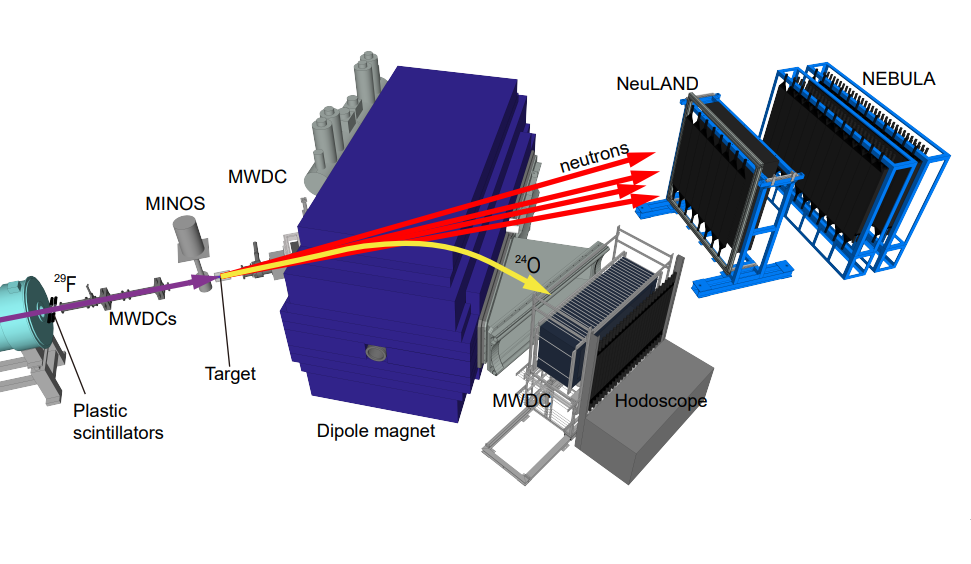First Observation of 27,28O
First Observation of 27,28O
Subjecting a physical system to extreme conditions is one of the means often used to obtain a better understanding and deeper insight into its organization and structure. In the case of the atomic nucleus, one such approach is to investigate isotopes that have very different ratios of the numbers of neutrons and protons (N/Z) than in stable nuclei. Light, neutron-rich isotopes exhibit the most asymmetric N/Z ratios and those lying beyond the limits of binding, which undergo spontaneous neutron emission and exist only as very short-lived resonances (about 10−21 seconds), provide the most stringent tests of modern nuclear-structure theories.
We report in our paper in the journal “Nature” on the first observation of 27O and 28O through their decay into 24O and three and four neutrons, respectively. The nucleus 28O is of particular interest as, with the Z = 8 and N = 20 magic numbers, it is expected in the standard shell-model picture of nuclear structure to be one of a relatively small number of so-called “doubly magic” nuclei. Both 27O and 28O were found to exist as narrow, low-lying resonances within some 1 MeV of threshold. In addition, it was also found that 28O does not exhibit a closed N = 20 shell structure.
These results were obtained by the SAMURAI collaboration working at the RIBF-RIKEN (Japan) of which the Nuclear Structure research group is one of the principal actors.

Read more
-
« First observation of 28O » Y. Kondo et al. (SAMURAI21 Collaboration), Nature 620 (2023) 965« First observation of 28O » Y. Kondo et al. (SAMURAI21 Collaboration), Nature 620 (2023) 965
-
Nature News and Views : « Heaviest oxygen isotope is found to be unbound », Nature 620 (2023) 958 (commentaire)Nature News and Views : « Heaviest oxygen isotope is found to be unbound », Nature 620 (2023) 958 (commentaire)